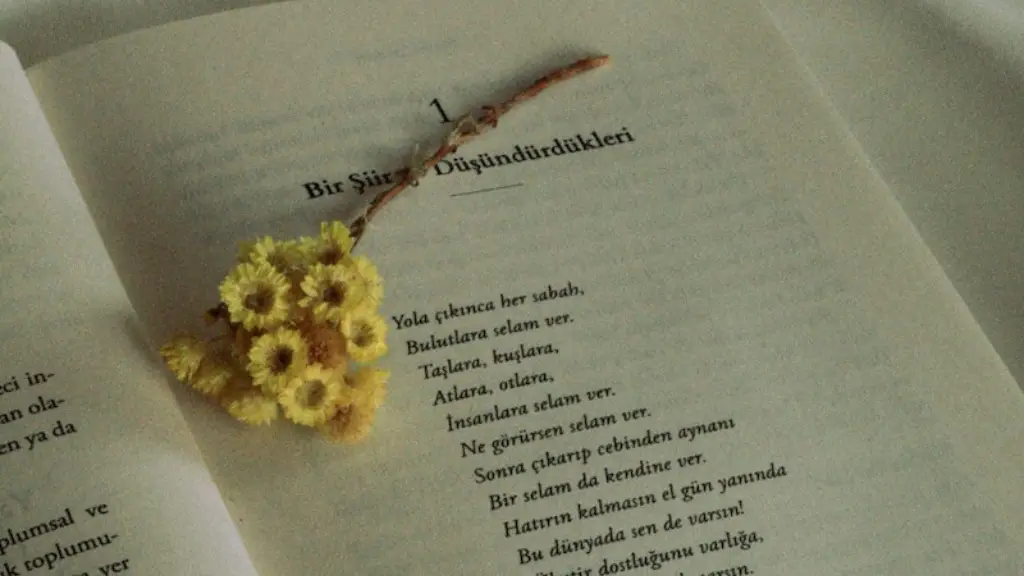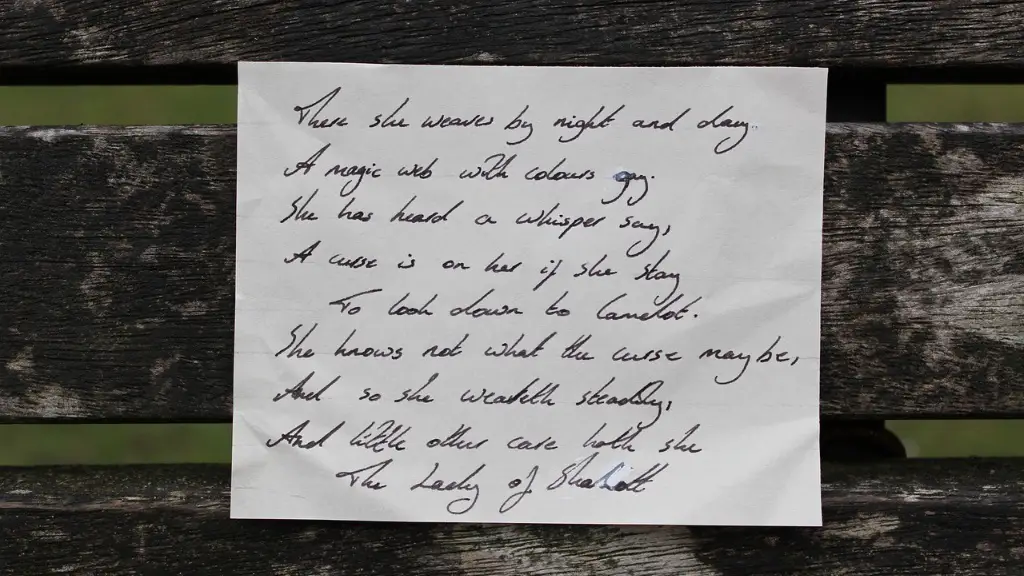Annotating poetry: Overview
Poetry annotation is an important skill that allows deeper understanding and appreciation of what the poet is trying to convey. Annotation involves highlighting, underlining, and noting key points and structures in lines of poetry, as well as analysing the meaning and structure of the poem as a whole. Annotation also builds a bridge between the reader and the poem in order to understand the poet’s meaning. It is a skill that can take time and practice to become proficient, but the effort is worthwhile.
Benefits of annotating poetry
Annotating poetry has many benefits. It allows us to explore the content of the poem on a much deeper level, uncovering figurative language, layers of meaning, and symbols that all contribute to the poem’s overall message. Annotation also sharpens our overall comprehension of the text, making the connections and inferences easier to detect. It also highlights important words and phrases that the poet uses to create a certain mood or effect, which helps us to perceive the poem more accurately.
Marking poetic devices
In order to fully appreciate all of the complexities of a poem, it is important to note how the poet has arranged their words. This can be done by highlighting or double-underlining particular lines. For example, a person may want to be aware of any rhyming words and highlight these. This will help them to understand how the poem’s rhythm functions, and how the rhyme affects the poem’s meaning. Similarly, noting the use of metaphor and similes, as well as alliteration and assonance, can help to reveal how the poet has crafted the poem.
Identifying structure and elements
The structure of a poem can be broken down into various elements, such as stanzas, lines, and images. Annotating the poem can help to identify the poetic structures and form of the poem, which can often be a source of meaning. Additionally, analysing the syntax of the poem will allow us to discern the poet’s emphasis. This is especially useful if the poem appears to have been organised in a particular way to express a certain message.
Exploring artistic effects
In addition to the technical aspects of a poem, it is also important to consider the artistic elements of the poem, such as the poet’s voice and the overall tone. Annotating can help to reveal how the poet has crafted a certain atmosphere in order to evoke certain emotions from the reader. Additionally, noting the poet’s choice of words and phrasing may thoughtfully influence the poem’s message.
Engaging with the poem
Annotating can also be a way for readers to engage with the poem on a personal level. For example, readers can make notes about the poem’s significance to them and use these annotations to guide them in future readings. Additionally, poem annotation is a useful tool for poetry analysis, as readers can investigate the poem’s deeper layers of meaning and break it down into more digestible sections.
Conclusion
Annotation can be a powerful tool for understanding, appreciating, and engaging with poetry. It allows us to uncover the many layers of meaning, ideas, and structures within a poem, as well as explore the poet’s use of language and tone. Through annotating poetry, we can more effectively grasp the poem’s overall significance, and connect with the work on a deeply personal level.
Exploring symbolism within poetry
Annotating poetry can also help to uncover any symbolism within the text. In certain poems, the poet may use a certain object or image to represent an idea or message. Analysing these symbols can be a further opportunity to explore and interpret the poem’s meaning. For example, by analysing the poet’s use of animals, such as in T.S. Eliot’s ‘The Waste Land’, readers can make links to the poem’s underlying themes.
Exploring theme and subject
Annotating a poem is also useful for detecting the underlying themes and subjects presented within the text. By noting key points and symbols in the poem, readers can make connections between the various ideas presented and identify the poet’s overall message. For example, by recognising the various images associated with the sea in ‘Love After Love’ by Derek Walcott, readers can discern the poem’s overall theme of freedom and personal growth.
Breaking down complex poems
In addition to uncovering symbolism and themes, poem annotation can also help to break down complex texts. By making notes on key points in the text and structure, readers can make the poem easier to read and understand. This technique can be particularly useful when faced with a long or difficult poem, such as W.B. Yeats’ ‘Sailing to Byzantium’, as it will help readers unpick the poem’s various elements and make connections between them.
Analysing tone and imagery
Analysing the tone of a poem can also be an important annotation task. By noting the poet’s choice of words and phrasing, readers can pick up on the mood represented throughout the poem. Additionally, readers can note any imagery used by the poet in order to gain an insight into the poet’s perspective. For instance, by taking note of the imagery within Sylvia Plath’s ‘Daddy’, readers can better comprehend her use of absurdity, irony, and anger.
Working collaboratively on poetry annotation
Annotating poetry can also be a great way to collaborate in order to better understand a text. Working in a group can provide opportunities to compare interpretations and share insights. As well as this, sharing perspectives can also open our minds to new interpretations and ideas. Annotating poetry can be a great way to appreciate and learn from another’s approach to a poem.
Finally, it is important to note that annotation is a skill that takes practice, and one which readers should revisit frequently. Re-reading text and revisiting tags allows readers to check their annotations are still valid, and allows them to adjust any parts of their understanding if needed. Additionally, by re-reading poems and revisiting their annotations, readers will be able to further appreciate the poet’s unique construction and meaning in the text.



